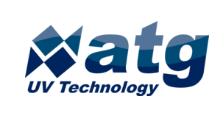 Add My Company
Add My Company
Sign In

NEW YORK CITY VS. CRYPTOSPORIDIUM
Following major Cryptosporidium outbreaks in the UK and USA, Cryptosporidium has become a major concern for the leisure industry. Commonly found in lakes and rivers, Cryptosporidium has a thick outer shell, making it highly resistant to traditional methods of chemical disinfection such as chlorine, vastly increasing the risk of infection and illness, that can often prove fatal in the young and elderly.
Due to the resistant nature of Cryptosporidium, its ability to multiply, the speed of infection and the scale of health problems caused, the need for increased protection is now at the top of the agenda. Discover how UV technology was used to mitigate risk.
UV DISINFECTION IS THE TREATMENT OF CHOICE
With traditional methods failing to provide adequate protection, UV treatment, and disinfection are becoming the obvious choice for water treatment engineers committed to resolving this threat.
So large was the scale of the problem in New York, where approximately 4,000 patrons of an aquatic facility became infected with Cryptosporidium, and consequently took out legal action.
The New York Department of Health was forced to re-think their entire water treatment strategy and called upon their experience in the drinking water industry to find a solution to the growing threat. They concluded that the risk of an outbreak would be greatly reduced by the use of “Ultraviolet treatment systems.”
THE PROBLEM
Following investigations into the outbreak, the origin was tracked to a spray deck application in New York. Extremely popular with young children, spray deck and splash pad applications feature low circulating water volumes, typically high bather loads and spray features that create atomized water.
Spray decks and splash pads operate with increased temperatures and increased water turbulence. Due to the warm temperature of the water and increased bather loads splash pad and spray decks are a breeding ground for harmful microorganisms such Cryptosporidium and Giardia despite high levels of chlorine.
Additionally atomized water that is created when fine spray/mist from water features combines with the air in the surrounding environment poses an extra risk.
While this feature can be fun for patrons of all ages, a contaminated water source that is atomized and then inhaled can cause severe illnesses such as Legionnaires Disease and Pneumonia, making UV protection a ‘must have’ for any water play application.
THE SOLUTION – UV TECHNOLOGY
Working closely with atg UV Technology, the New York Department of Health invested in a range of state-of-the-art, in-line medium pressure UV disinfection/treatment systems to safeguard public health and combat the risk posed by Cryptosporidium and other chemically resistant microorganisms.
During the investigations, atg UV Technology bio-dose tested a number of UV systems to gain regulatory approval and performance data specifically for the effectiveness of UV disinfection against Cryptosporidium.
As a result, all swimming pool UV systems provided to the New York Department of Health by atg UV Technology offered a minimum of 99.9% reduction of cryptosporidium (3 log reduction).
Ultimately the inclusion of UV treatment systems is now firmly entrenched within New York’s water safety legislation for leisure facilities.
Section 6-3.11 section 3 of the New York water safety regulation states:-
“Ultraviolet light disinfection is required in addition to an approved Chemical disinfectant.”
A decision already being investigated and adopted by other US States and forward thinking leisure operators in the UK leisure industry keen to avoid the costly ramifications associated with an outbreak.
For expert advice on UV water treatments, contact our team of experts for more information.
For more information on Treating Cryptospordium Outbreaks: New York City Leisure operators talk to atg UV Technology
Enquire Now
More related to Treating Cryptospordium Outbreaks: New York City Leisure operators
List your company on FindTheNeedle.
